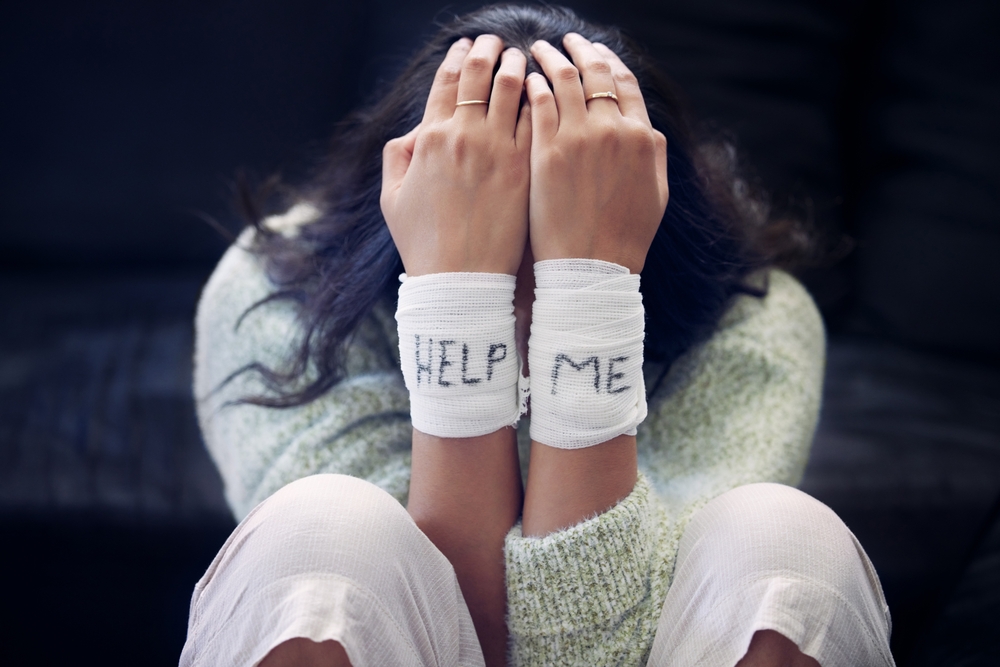Last Updated:
May 28th, 2025
Self-Harm and Addiction | Signs and Support Options
What is self-harming?
Self-harming refers to the act of deliberately causing physical pain or injury to oneself as a way of coping with emotional distress. It is not typically an attempt to end one’s life but rather a way to release overwhelming feelings, regain a sense of control or distract from emotional pain.
While it can sometimes be linked to suicidal thoughts, self-harm is distinct from suicidal behaviour because the intention is usually to manage emotions rather than a want to die.
There are different types of self-harming behaviours, and they can vary from person to person. Some of the most common forms include:
- Cutting or scratching: Using sharp objects to create wounds on the skin, often on the arms, legs or torso.
- Burning: Applying heat, such as matches, lighters or hot objects, to the skin.
- Hitting or punching: Physically striking oneself or hitting walls and objects to cause bruising.
- Hair pulling (Trichotillomania): Repetitively pulling out hair from the scalp, eyelashes or eyebrows.
- Interfering with wound healing: Reopening or picking at wounds to prolong pain and injury.
- Substance-related self-harm: Using alcohol or drugs in a way that deliberately causes harm rather than seeking pleasure or escapism.
The key difference between self-harm and suicidal behaviour is intention. Someone who self-harms is typically seeking temporary relief from emotional pain, whereas suicidal behaviour is driven by a desire to end one’s life.

Why would someone want to self-harm?
There is no single reason why someone might engage in self-harm, just as there is no specific thought process or behaviour that guarantees a person will self-harm. It’s a deeply personal and complex experience influenced by various factors.
Below, we take a look at some of these potential factors.
Are there links between self-harm and addiction?
There is strong evidence linking self-harm and addiction, with research showing that those who engage in self-harm are at a higher risk of developing substance use disorders. The relationship is particularly noticeable in adolescence when self-harm and substance use often co-occur.
One of the most extensive and long-running studies to examine this link is a 15-year prospective cohort study conducted in Victoria, Australia.
Tracking 1,943 adolescents from the age of 15.9 to 29.1, researchers found that adolescents who engaged in self-harm were more than three times more likely to use substances. By young adulthood, they were also four times more likely to develop multiple substance dependence syndromes. Even after adjusting for anxiety and depression, the connection remained strong, highlighting self-harm as a potential independent risk factor for addiction.
These findings suggest that self-harm in adolescence may serve as a key warning sign for future substance use disorders, underscoring the importance of early intervention.
What are the warning signs of co-occurring self-harm and addiction?
Many self-harming behaviours happen in private, making them difficult to recognise. Even when there are visible marks, they are often explained away as accidental injuries. Addiction can also be hidden, with some people managing to conceal the extent of their substance use. Because both issues can be kept secret, it is not always obvious when someone is struggling.
However, certain emotional, behavioural and physical signs may indicate a deeper problem.
Spotting these signs is not always easy, but if you suspect someone is in distress, letting them know they are not alone and encouraging professional support can be the first steps toward recovery.
How are self-harm and addiction treated at a rehab centre?
Rehab centres provide vital support for those facing both addiction and self-harm, but self-harming behaviours often need to be managed before beginning addiction treatment. This ensures that the recovery process isn’t disrupted. Seeking support from a mental health specialist beforehand can help stabilise self-harming tendencies, making addiction treatment more effective.
Once self-harm is under control, the first stage of rehab usually involves detox, allowing the body to clear substances in a safe environment.
From there, therapy becomes the core focus, addressing addiction and its root causes. Many rehab programmes include cognitive behavioural therapy (CBT) and dialectical behavioural therapy (DBT), which help individuals manage distressing emotions and break harmful cycles. These therapies can be just as beneficial for self-harm recovery as they are for addiction.

Aftercare is the last step of most rehab programmes and is crucial in maintaining progress and providing continued guidance and a support system after leaving rehab.
What are the next steps?
If you or a loved one are struggling with self-harm and addiction, Addiction Helper can provide the guidance and support you need. Our team is available to offer confidential advice and connect you with the right treatment options. Reach out today and take the first step toward a healthier, safer future. Call us now for help.
Our compassionate team are ready and available to take your call, and guide you towards lasting the lasting addiction recovery you deserve.
Frequently Asked Questions
(Click here to see works cited)
-
- Moran P, Coffey C, Romaniuk H, Degenhardt L, Borschmann R, Patton GC. Substance use in adulthood following adolescent self-harm: a population-based cohort study. Acta Psychiatr Scand. 2015 Jan;131(1):61-8. doi: 10.1111/acps.12306. Epub 2014 Jun 23. PMID: 24954250; PMCID: PMC4293154.

